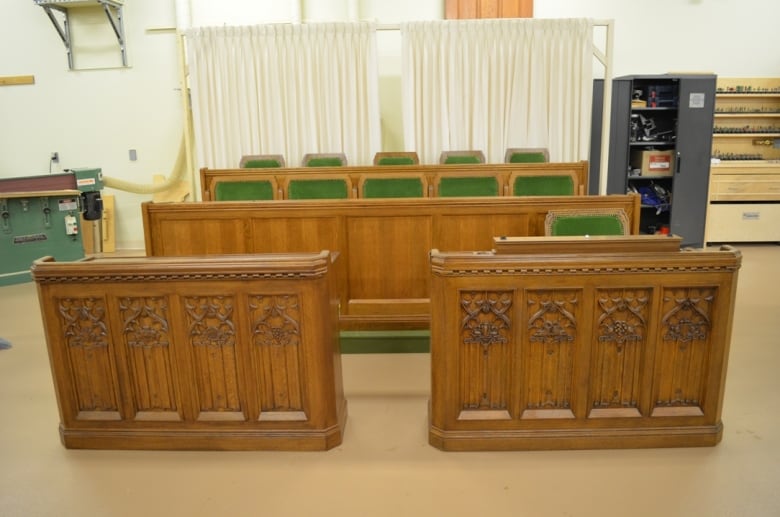Commons renovates to squeeze in 30 more MPs after fall election
Public Works unveils plan to seat 338 MPs where 308 now sit

In politics, voters often want nothing more than to throw the bums out. But in Ottawa these days, the question being asked is how to squeeze even more bums into the seats in the House of Commons.
The number of ridings represented on Parliament Hill will grow in the next election. Under the government’s Fair Representation Act, introduced in 2011, the House will expand by 30 seats.
Federal bureaucrats have been scratching their heads since the legislation passed, trying to draw up plans to fit 338 MPs into a chamber that now fits just 308. When Parliament is dissolved in the coming election, those plans will finally be put into action.
Nancy Chahwan, assistant deputy minister at the Department of Public Works, dropped some hints this week.
"We will be ready," Chahwan said during an appearance before a Commons Committee on Government Operations and Estimates.
"We have been working for a good period of time with the House of Commons to design additional seats."
Chahwan revealed that the two back rows of seats on both sides of the Commons will be replaced with what she calls "theatre seating."
As the name suggests, these seats will fold up to save space. There will also be more of them to cram in 30 more MPs.
Newly released photos from Public Works Canada show the new seats will be designed to blend in with the older ones. The department expects the new seats to be installed by the fall of 2015, in time for the next Parliament.
The project is expected to cost $2.75 million. Public Works says that includes the design, manufacture and installation of the new seats as well as the cost of wiring up the microphones and earpieces at MPs' desks for translation and communications.
'Can't stack us up like cordwood'
New Democrat MP Pat Martin, who is a trained carpenter, said he likes the design of the new seats. Martin is chair of the government operations and estimates committee. This week was the first time he had heard any details about the plan to rip out the back two rows of the Commons, he said.
"They can’t stack us up like cordwood," he said after looking at photos of the new seats.
"Thirty more MPs are going to arrive.… come hell or high water. So, I have to admit they’ve come up with a pretty creative solution."

"It does seem a staggering amount of money to buy a bit of office furniture," he said.
Martin also sees some potential drawbacks. In the current setup, most MPs sit two-by-two. With the new design, some members in the back rows of the Commons will be relegated to that place every air traveller tries to avoid — the middle seat.
Plus-size MPs test new seats
The new folding chairs are designed to at least be comfortable, even if a MP has to shimmy past colleagues to take a phone call or answer the call of nature. To that end, when the seats were first unveiled, five MPs who are of larger stature were invited to try them out.
"We called ourselves the Big Five," said Conservative MP Joe Preston, who was part of that trial run.

"These seats were incredibly good," he said.
No matter how comfortable, MPs won’t be sitting in the new chairs very long. Centre Block on Parliament Hill, which is home to both the House of Commons and the Senate, is set for a major multiyear renovation that’s scheduled to begin in 2018.
The plan is for the Commons to move to a temporary home in West Block while the work is being done. Public Works says it has not been determined yet whether the new theatre-style seats will be a permanent fixture in the Commons or if they'll be torn out and replaced with something else.
The overall cost of refurbishing Parliament now stands at roughly $3 billion.
In their appearance before the Commons committee this week, Public Works officials assured the panel of sometimes skeptical MPs that the project is running on time and on budget.
